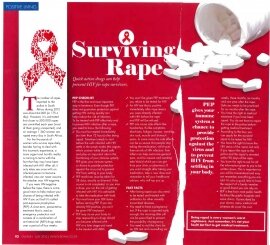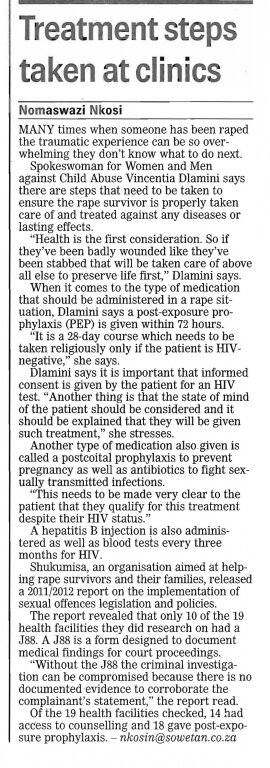

Tags
bona magazine, pep, sexual assault, sowetanEmpowering coverage on PEP
Maxine Birch
31 July 2013
Recent media coverage on rape provides readers with valuable information around HIV-preventative post-exposure prophylaxis (PEP).
Articles in the Sowetan and Bona magazine have, in a refreshing change of pace, have included PEP when covering sexual assault, shedding much-needed light on the issue.
According to a report in the Mail&Guardian last year, rape survivors are often left in the dark when it comes to post-rape care, which includes accessing and taking PEP. The media could fill this gap, acting as a vehicle for education and empowerment, and yet PEP is often still left out of post-rape care reporting.
In South Africa where on average 1360 women are raped every day and an estimated 5.2 million people are living with HIV, it is vital that the public is aware what steps need to be taken in the event of sexual assault.
Bona and the Sowetan’s coverage of PEP makes the crucial connection between rape and HIV, providing essential information for survivors and potentially preventing them from contracting HIV.
In particular, the Bona article (July 2013) gives factual and practical information on PEP in an accessible and understandable way, empowering readers with the correct information to take the necessary steps to protect themselves.
The article lists important do and don’ts of taking PEP, potential side-effects and even debunks the common misconception that you have to report a sexual assault to the police before being able to receive PEP.
Rape is a horrific and distressing experience, even without the added trauma of facing the possibility of being infected with HIV.
It is important for survivors to know that they can protect themselves and what steps they can take to do so. The media has the power to play an important role in making people aware of PEP, how to access it and take it correctly.
blog comments powered by Disqus



